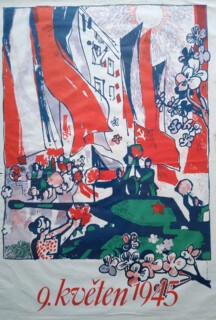A Murder Weapon, Not a Memorial
Sadakat Kadri
Yesterday was Tankmen’s Day in Russia. At Patriot Park outside Moscow, children drew Zs in crayon on armoured personnel carriers and raced toy tanks for prizes. In Chebarkul, adult re-enactors pretended to battle for their lives in Kursk, Kandahar, Georgia or Syria. As if to distract themselves from the vehicles currently smouldering across north-east Ukraine, crowds throughout Russia venerated antiques on pedestals, and the deputy defence minister presented Ivangorod with a T-34 from the Great Patriotic War.
Victory over Nazism was a central theme (the holiday was established in 1946), but so was Vladimir Putin’s claim that denazification hasn’t been fully achieved. Ivangorod is on the border with Estonia and the new monument was positioned, following Kremlin instructions, to greet foreign visitors. The tank’s muzzle points across the river frontier, along the Most Druzhby, or Friendship Bridge, towards EU immigration checkpoints in the Estonian city of Narva.
An uncompromising stance – but also a response. Until last month, Narva had its own T-34 on a plinth: a gift from the Kremlin in May 1970. It’s been a cause of angst for years. In a country where a quarter of people speak Russian as their first language, with a history shaped by collaboration with Nazis as well as victimisation by Communists, the national relationship with Soviet tanks is complicated. Narva councillors hoped till the end for a compromise, but Estonia’s prime minister, Kaja Kallas, decided in August that the T-34 had to go. ‘A tank is a murder weapon, not a memorial,’ she said. ‘These same tanks are killing people on the streets of Ukraine right now.’
Having visited Narva in March, I followed the controversy with interest. On 20 August, I travelled from Poland to Prague, 54 years to the day since Warsaw Pact divisions had trundled down the same route, on a Moscow-ordered mission to end the Prague Spring. Three decades earlier, the region had been part of the Sudetenland, and Nazi militarised units had roared through the surrounding forests. Heavy weaponry was on my mind when I learned on 21 August that some of Narva’s Russian-speakers were missing their tank already, and had taken to gathering around a shrine made of candles in the shape of a T-34.
Tanks haunted my imagination for the rest of my time in Prague. Occasionally, the thoughts were positive. I can get as sentimental as the next anti-Nazi about 1945, and a propaganda poster I picked up in a junk shop revived fond memories of a conversation I had some years ago with a 93-year-old Czech woman. She told me how happy the sight of a Soviet tank on 9 May had made her. ‘The gunner was so handsome,’ she said. ‘All I wondered is when the dance halls would reopen.’ Darker history was never far off though. Ivan Goncharenko, a lieutenant killed at the head of the Red Army’s first armoured column into Prague, is honoured near the castle by a plaque. Two hundred metres away there’s a memorial to Marie Charousková, a 25-year-old engineering student shot dead by a Soviet soldier in August 1968.
Even as the Prague Spring was being crushed, apologists claimed that Moscow had come in peace. The best refutation of that lie I’ve come across is at Prague’s National Museum at the top of Wenceslas Square. The façade was so distinctively raked by tank fire in 1968 that it got a nickname. With due attribution to Andrei Grechko, the Soviet defence minister, the intricate pattern of bullet holes and craters became known as a work by ‘El Grechko’. The damage is still perceptible.

Comments
Not a word on the fact that while Soviet-era memorials are actively being dismantled or destroyed all over Baltic countries, numerous active collaborators of the Nazis have been (and keep being) "rehabilitated" and publicly honoured in the past 30 years.
Details, surely.
After all, the EU has nothing to say about it.